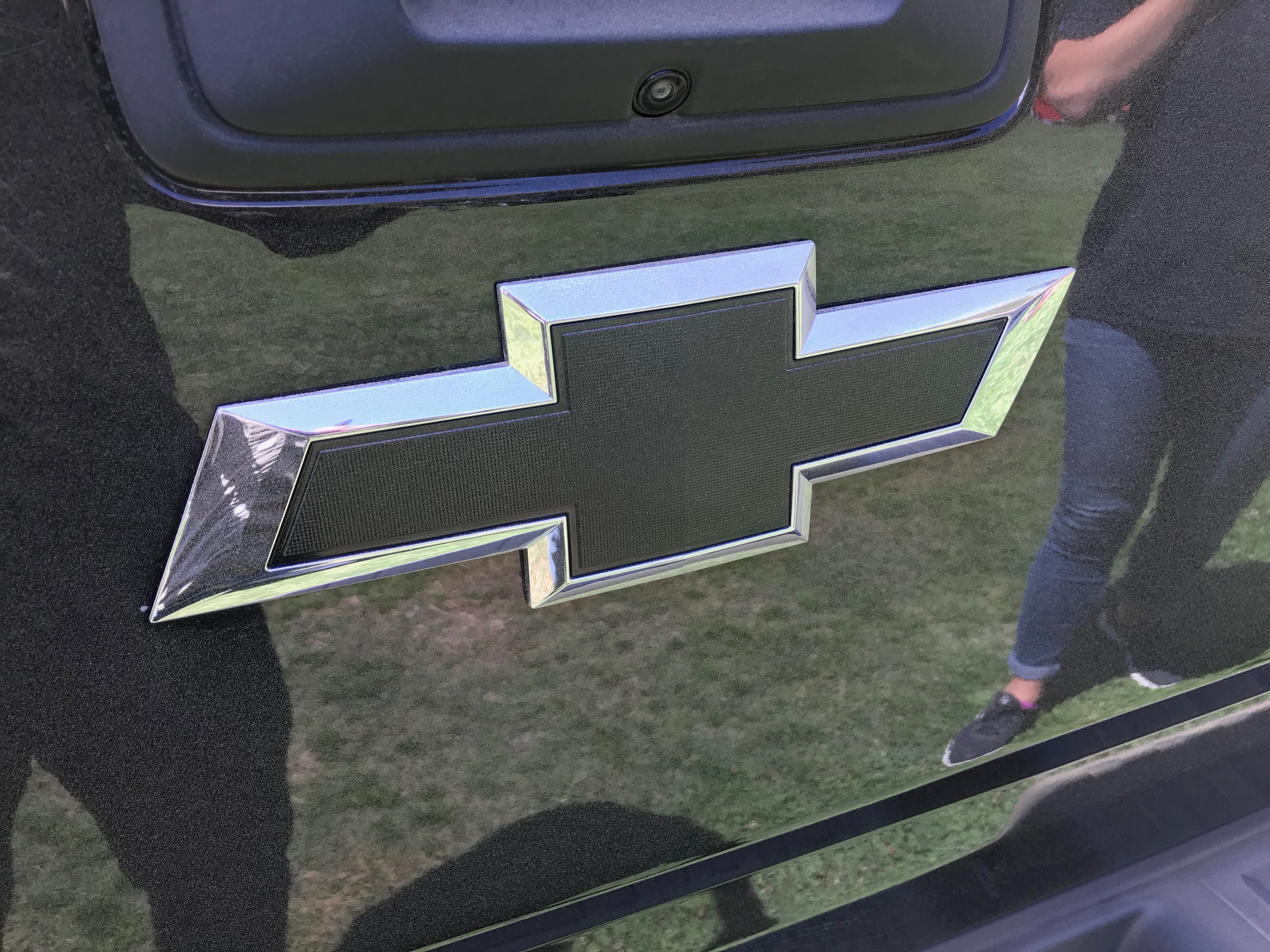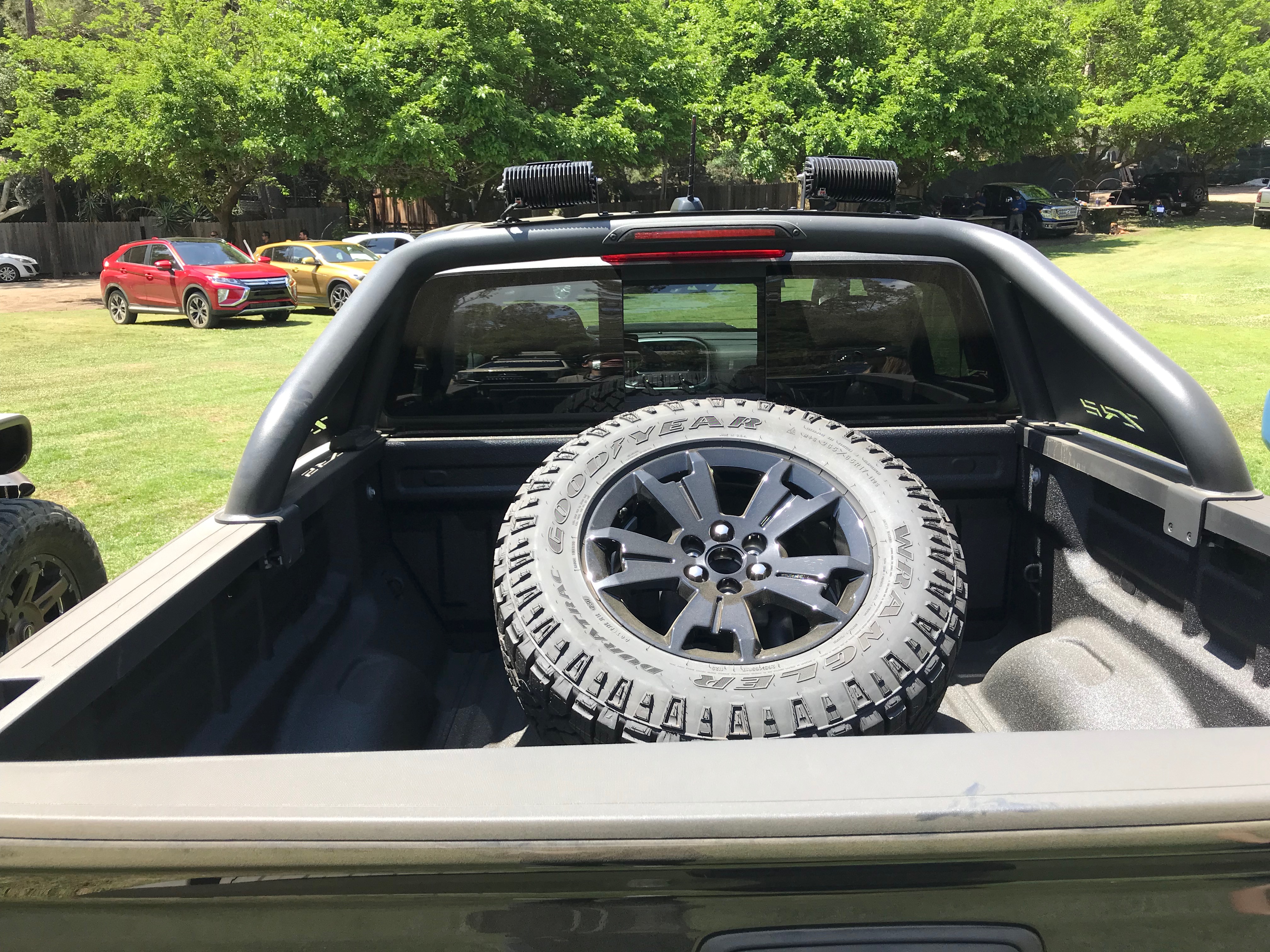

2018 Chevrolet Colorado ZR2 vs. 2018 Toyota Tacoma TRD Pro
Midsize off-road trucks battle for the rock-crawling crown
By Randy Lioz, Editor, Car-ED.com | June 2018
At the Motor Press Guild’s recent Droptops & Dirt event at Calamigos Ranch, near Malibu, CA, journalists had a chance to try out a unique mix of off-road focused trucks and utilities, as well as sporty convertible models.
This is an intriguing time for those who like to play in the muck, as there are several different options within the pickup segments offering specially developed off-road editions straight from the factory. We got a chance to try two of these trucks, the Chevrolet Colorado ZR2 and the Toyota Tacoma TRD Pro, side-by-side.
What are these vehicles?
These are trim levels of the popular Chevy Colorado and Toyota Tacoma. Already highly capable trucks, the brands add special equipment that allows them to be used in extreme off-roading tasks, like special suspension pieces that allow for better articulation during rock crawling, powertrain components that allow torque to be precisely controlled for optimal traction, body protection that preserves the panels even among tough terrain, and appearance pieces that announce to the world that they’re trucks to be reckoned with.
Who are these vehicle for?
These trucks appeal most to outdoor enthusiasts, many of whom appreciate the ability of these highly refined pickups to serve as their workaday around-town transportation, but also to let down their hair and play in the mud on the weekends. Owners might also have dirtbikes and ATVs they want to bring along, so it’s nice that both of these vehicles are equipped for towing duty as well.
Why are these vehicles important to you, the buyer?
While there are plenty of outdoor enthusiasts that love to load up their vehicles with all manner of off-road goodies, from lift kits to brush guards, others would rather just grab something from the showroom that’s fully warrantied and involving less effort and expense. The fact that these trucks have plush, modern interiors full of connectivity tech means that outdoor adventures can be undertaken with fewer compromises for comfort than ever before—the automotive equivalent of “glamping.”
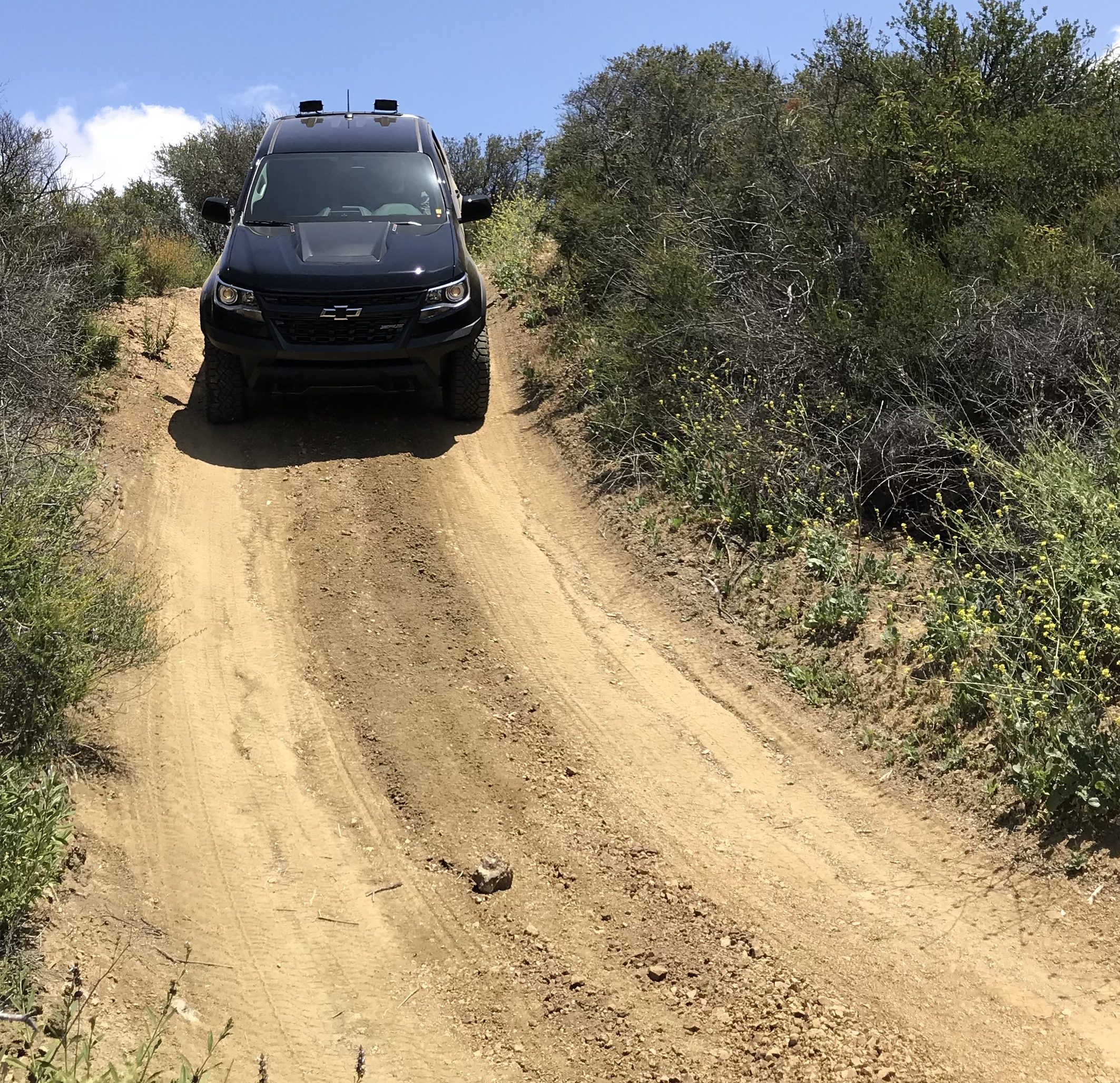
2018 Chevrolet Colorado ZR2
 The Colorado ZR2 debuted for 2017, and it made a big splash with its fancy Dynamic Suspensions Spool Valve dampers (aka shock absorbers), developed by Multimatic, which have their origins in race cars and exotics.
The Colorado ZR2 debuted for 2017, and it made a big splash with its fancy Dynamic Suspensions Spool Valve dampers (aka shock absorbers), developed by Multimatic, which have their origins in race cars and exotics. 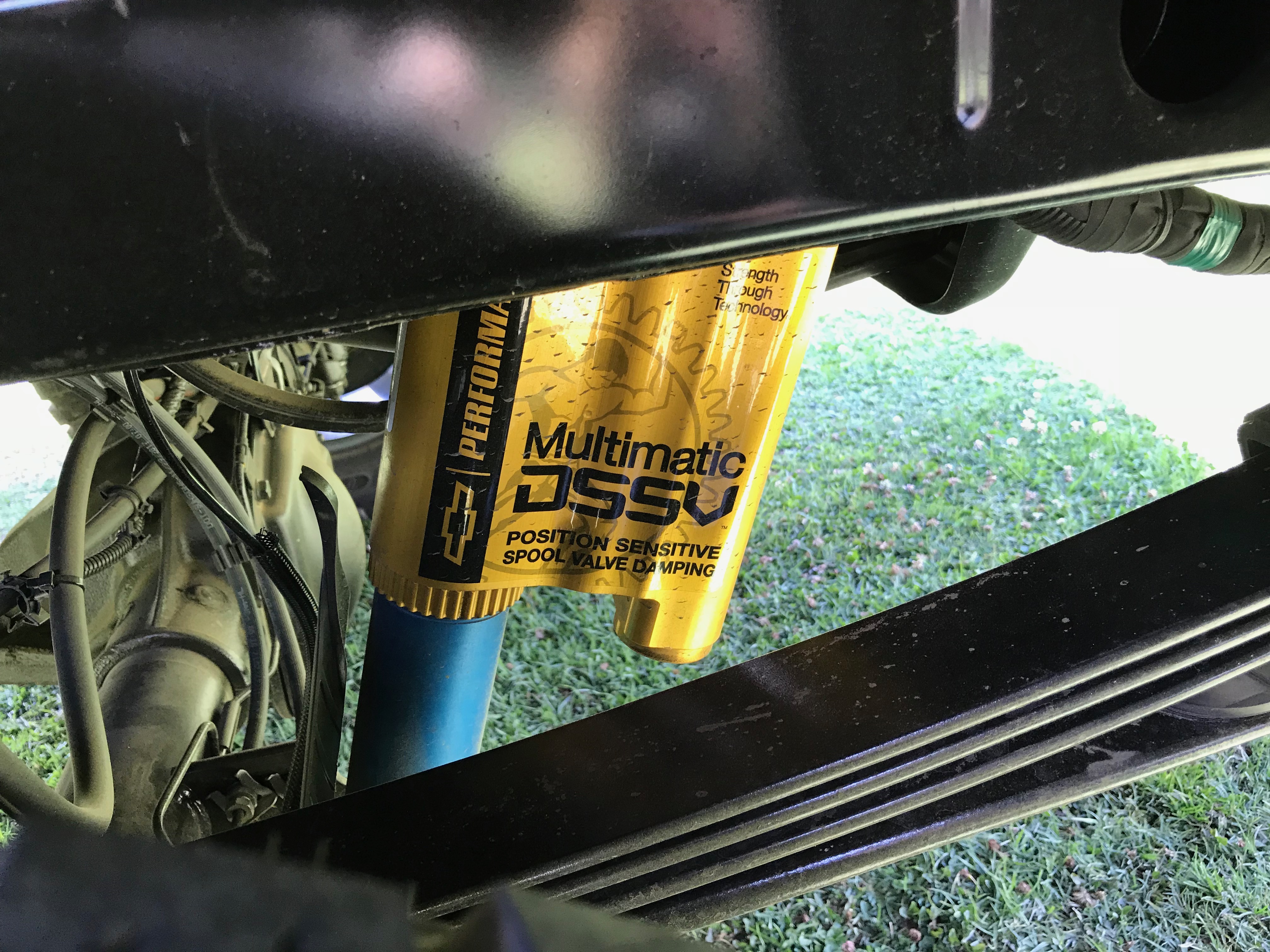 They allow for a wider range of tuning than traditional dampers, which is great for an off-road application like this, but also translates well to on-road control.
They allow for a wider range of tuning than traditional dampers, which is great for an off-road application like this, but also translates well to on-road control.
The ZR2 also comes with a host of other rock-crawling gear, like full-locking front and rear differentials, a trailering equipment package, special wheels and all-terrain tires, an off-road appearance package and rocker panel protection. That final feature almost looks like a retractable running board, but it’s fixed in place, and you’ll be glad to have it when you encounter a narrow rocky path and get the truck caught up on some jutting formations.
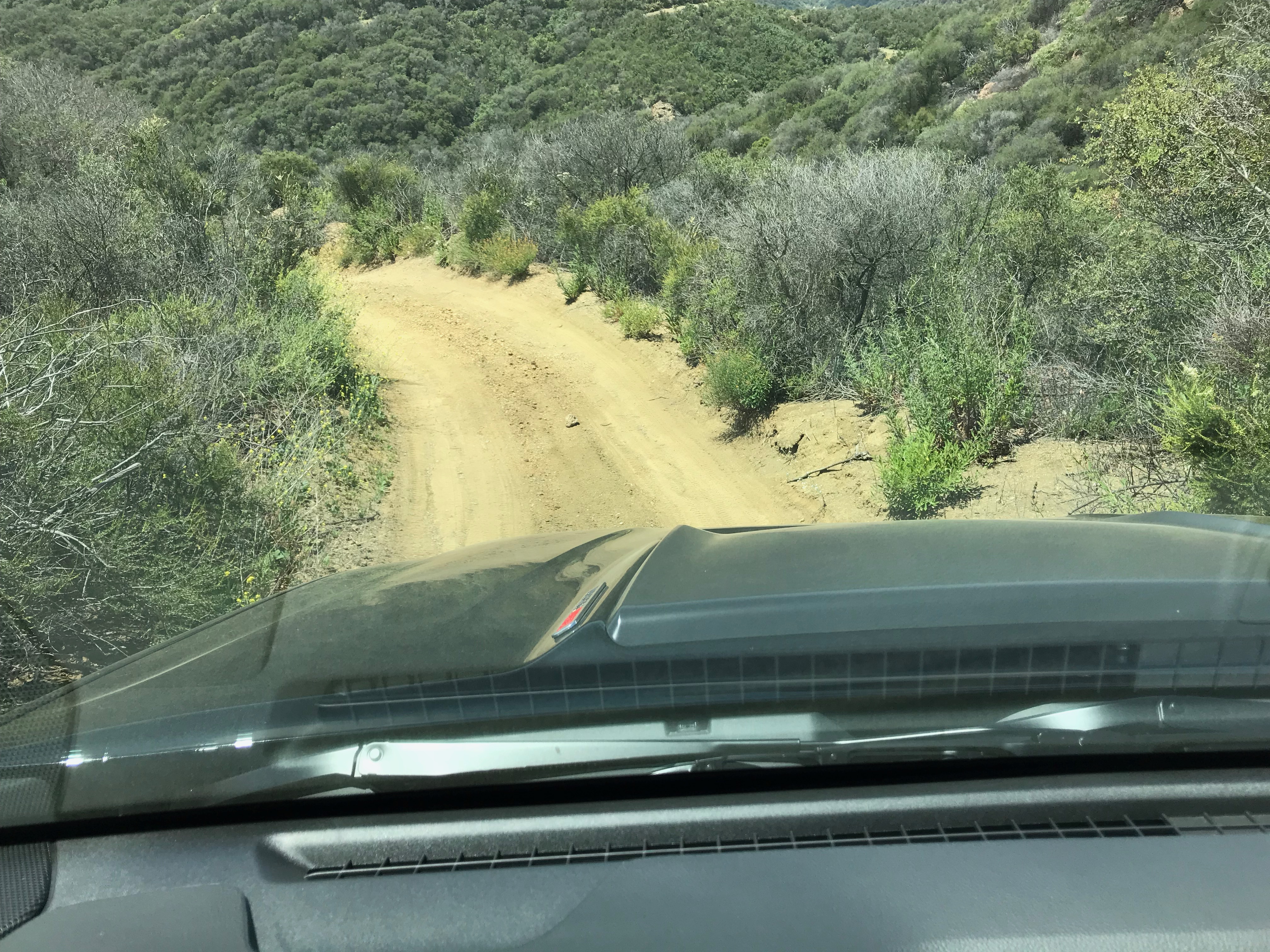 The off-road also appearance package gives the ZR2 different bumpers to improve its approach and departure angles, and the Colorado already comes with skid plates to protect the juicy bits, like its transfer case. There’s also a cool-looking hood scoop to set it apart from lesser pickups.
The off-road also appearance package gives the ZR2 different bumpers to improve its approach and departure angles, and the Colorado already comes with skid plates to protect the juicy bits, like its transfer case. There’s also a cool-looking hood scoop to set it apart from lesser pickups.
The truck that Chevy brought to the event also had a couple attractive extras on it, including a diesel engine, and the Midnight Edition package. The engine option costs $3,500, and is unique within this segment, as diesel vehicles have been slow to trickle down from heavy duty trucks to the smaller offerings, especially midsize trucks like the Colorado. It’s a 2.8L Duramax four-cylinder, good for 181 hp and a healthy 369 lb-ft of torque, perfect for scrambling up steep rock faces. It was matched to a 6-speed auto in the truck we drove.
Unfortunately for ZR2 buyers, the upgrades for this trim, including a 3.42 axle ratio, eliminate the fuel economy advantage that it would have over the Tacoma, landing at 20 mpg combined. The non-ZR2 diesel version of the Colorado with 4WD gets a 23-mpg combined rating. But at least it’s not the gas version of the ZR2, which has a 17-mpg rating from its 3.6L V-6 engine, despite its 8-speed transmission.
The Midnight Edition is a $3,425 upgrade, and it has a lot going for it. It’s an appearance package which blacks out things like the bowtie logos and wheels, but it also adds a spare—mounted in the bed for another $615—that matches the other wheels, and a pretty cool bed-mounted light bar with the ZR2 logo on its side sails. You can only get the Midnight Edition in black, but if you want a similar setup in another color, go for the Dusk Edition.
Just like any other new Chevy you can buy, the Colorado has a standard MyLink 8” touch screen, which brings with it Apple CarPlay and Android Auto capability, as well as a 4G LTE hotspot. And it has other luxury touches like heated power leather seats, auto A/C and an auto dimming rearview mirror. One area that GM has surprisingly neglected on its trucks, though, is keyless access and pushbutton start, which aren’t available on the Colorado, or its sister vehicle, the GMC Canyon.
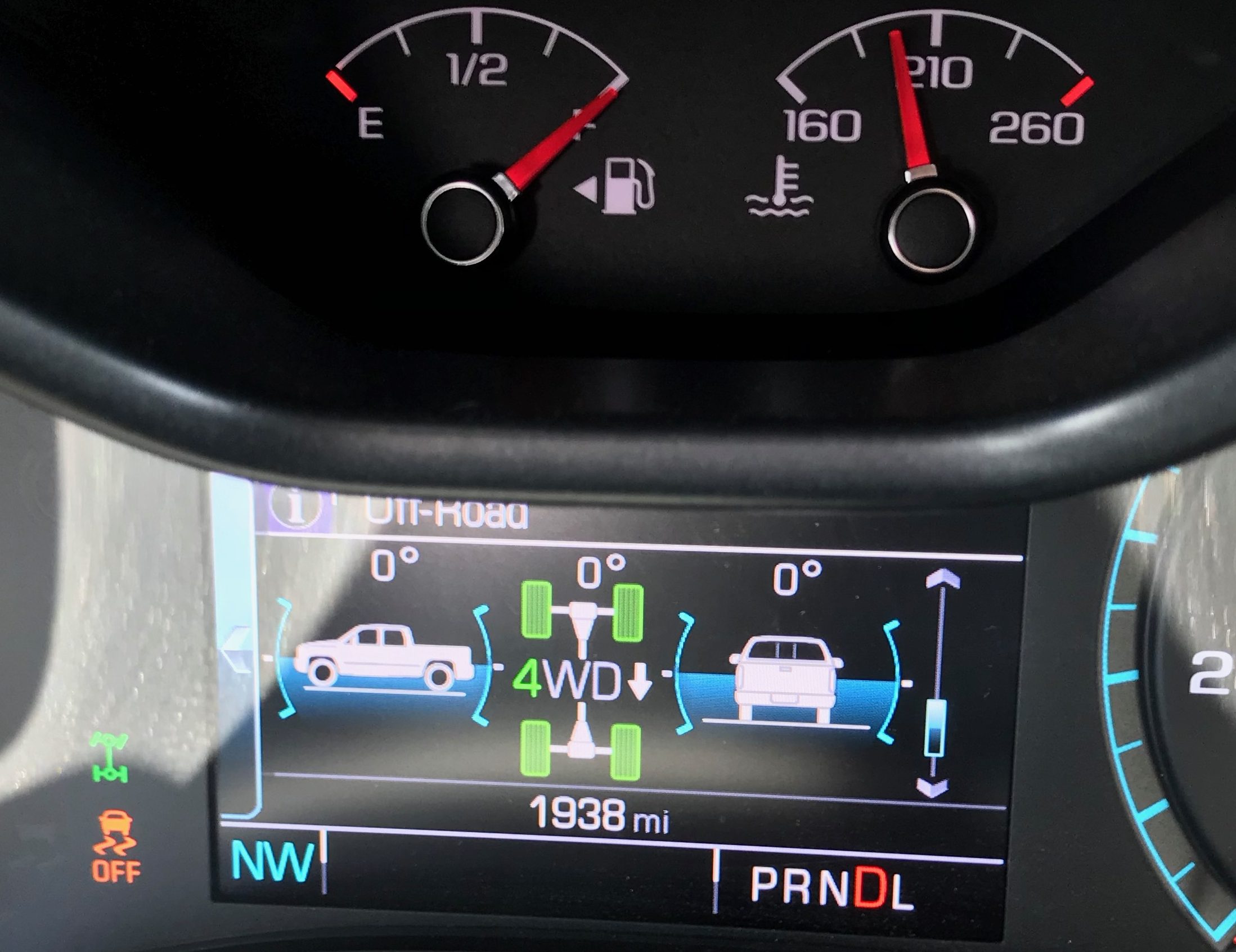 The ZR2 was super confident on the off-road trails around Calamigos Ranch, with its modest width helping to made placement between rocks a bit easier, even though the track is slightly wider than standard, by about 3”. The suspension was incredibly responsive, making quick work of any obstacle, but allowing for legitimate feel of the trail, which enabled more precise application of power over those rocks. The DSSV dampers allow the suspension to be stiff enough to provide that enhanced feel, while still having a pretty expansive range of travel, building upon the vehicle’s enhanced ride height, 2” higher than a base Colorado. We didn’t even need the truck’s Off-Road Mode, which allows for a bit more wheel slippage, which can help it make the best use of its torque.
The ZR2 was super confident on the off-road trails around Calamigos Ranch, with its modest width helping to made placement between rocks a bit easier, even though the track is slightly wider than standard, by about 3”. The suspension was incredibly responsive, making quick work of any obstacle, but allowing for legitimate feel of the trail, which enabled more precise application of power over those rocks. The DSSV dampers allow the suspension to be stiff enough to provide that enhanced feel, while still having a pretty expansive range of travel, building upon the vehicle’s enhanced ride height, 2” higher than a base Colorado. We didn’t even need the truck’s Off-Road Mode, which allows for a bit more wheel slippage, which can help it make the best use of its torque.
 Like many other off-road focused vehicles, the ZR2 has a crawl mode for negotiating hills, which did a great job of managing a tricky descent. It’s easy to activate, but unlike other systems it doesn’t have the ability to adjust its crawl rate, so you’re really just relying on the aggressively low gearing.
Like many other off-road focused vehicles, the ZR2 has a crawl mode for negotiating hills, which did a great job of managing a tricky descent. It’s easy to activate, but unlike other systems it doesn’t have the ability to adjust its crawl rate, so you’re really just relying on the aggressively low gearing.
As a package, the ZR2 represents a great value, since, at $42,995, it’s one of the most affordable ways to get into an off-road truck from the factory, without buying a stripper or a pickup and upfitting it yourself. The Colorado took anything we threw at it, and its communicative suspension gave us the confidence that it could tackle a whole lot more if we were able to take it for a full day of off-roading.
Now that’s a recipe for affordable fun!
2018 Toyota Tacoma TRD Pro
 Toyota Racing Development (TRD) has a long tradition of creating exciting off-road parts for its trucks and SUVs, and the TRD Pro series, which includes versions of the 4Runner, Tacoma and Tundra, takes this to the next level, factory-backed, fully off-road ready rock stormers.
Toyota Racing Development (TRD) has a long tradition of creating exciting off-road parts for its trucks and SUVs, and the TRD Pro series, which includes versions of the 4Runner, Tacoma and Tundra, takes this to the next level, factory-backed, fully off-road ready rock stormers.
 The Tacoma in TRD Pro guise looks pretty aggressive, with a new front grille that replaces the brand’s bull logo with prominent TOYOTA lettering, reminiscent of Toyota’s heritage of rugged, legendary off-roaders, like the FJ40 Land Cruiser. The Tacoma also gets a hood scoop and a matte-black sticker to surround it, to cut down on glare over the hood—you’ll see this feature on hard-core Jeep products, too. Like the Midnight Edition Chevy, this truck also wore black alloys with rugged Goodyear Wrangler tires, though these were only 16” to the ZR2’s 17” wheels.
The Tacoma in TRD Pro guise looks pretty aggressive, with a new front grille that replaces the brand’s bull logo with prominent TOYOTA lettering, reminiscent of Toyota’s heritage of rugged, legendary off-roaders, like the FJ40 Land Cruiser. The Tacoma also gets a hood scoop and a matte-black sticker to surround it, to cut down on glare over the hood—you’ll see this feature on hard-core Jeep products, too. Like the Midnight Edition Chevy, this truck also wore black alloys with rugged Goodyear Wrangler tires, though these were only 16” to the ZR2’s 17” wheels.


New springs front and rear give the truck a 1” lift over other models, and the Toyota’s remote reservoir dampers come from FOX Racing, though they’re specially tuned by TRD. It gets skid plates and a special exhaust system, plus a unique shift knob and floor mats inside. The package is rounded out with Rigid Industries LED fog lights, a company that’s made a name for itself among off-roaders with durable lenses and excellent lighting performance.
The Tacoma is powered by a 3.5L V-6 engine—like the Chevy it’s paired with a 6-speed auto transmission. It generates 278 hp, which is a nice advantage for highway cruising, particularly when it comes time to pass, but its 265 lb-ft of torque is a lot more modest than the Chevy diesel engine’s spec, which is why off-roaders appreciate those “oil burners.”
But one of the other advantage that diesels tend to have, fuel economy, is nearly non-existent for the ZR2 diesel. It has a 1-mpg advantage in the city—19 vs. 18 for the Toyota, and their 22 mpg highway and 20 mpg combined ratings are identical. And towing and payload capacity are actually higher for the Tacoma TRD Pro than for the Colorado ZR2, with the Tacoma having an 1,800-lb advantage in the former (its can tow up to 6,800 lbs) and a 75-lb advantage in the latter (1,175 lbs). This surprising result likely comes down to the ZR2’s more aggressive axle ratios.
The different character of the trucks becomes evident on the trails, with the Toyota’s suspension settings being more laid back and tuned for comfort, compared to the stiffer setup in the Chevy. This can definitely be pleasant, but it can also sap your confidence over rocky terrain, since you’re getting less feedback.
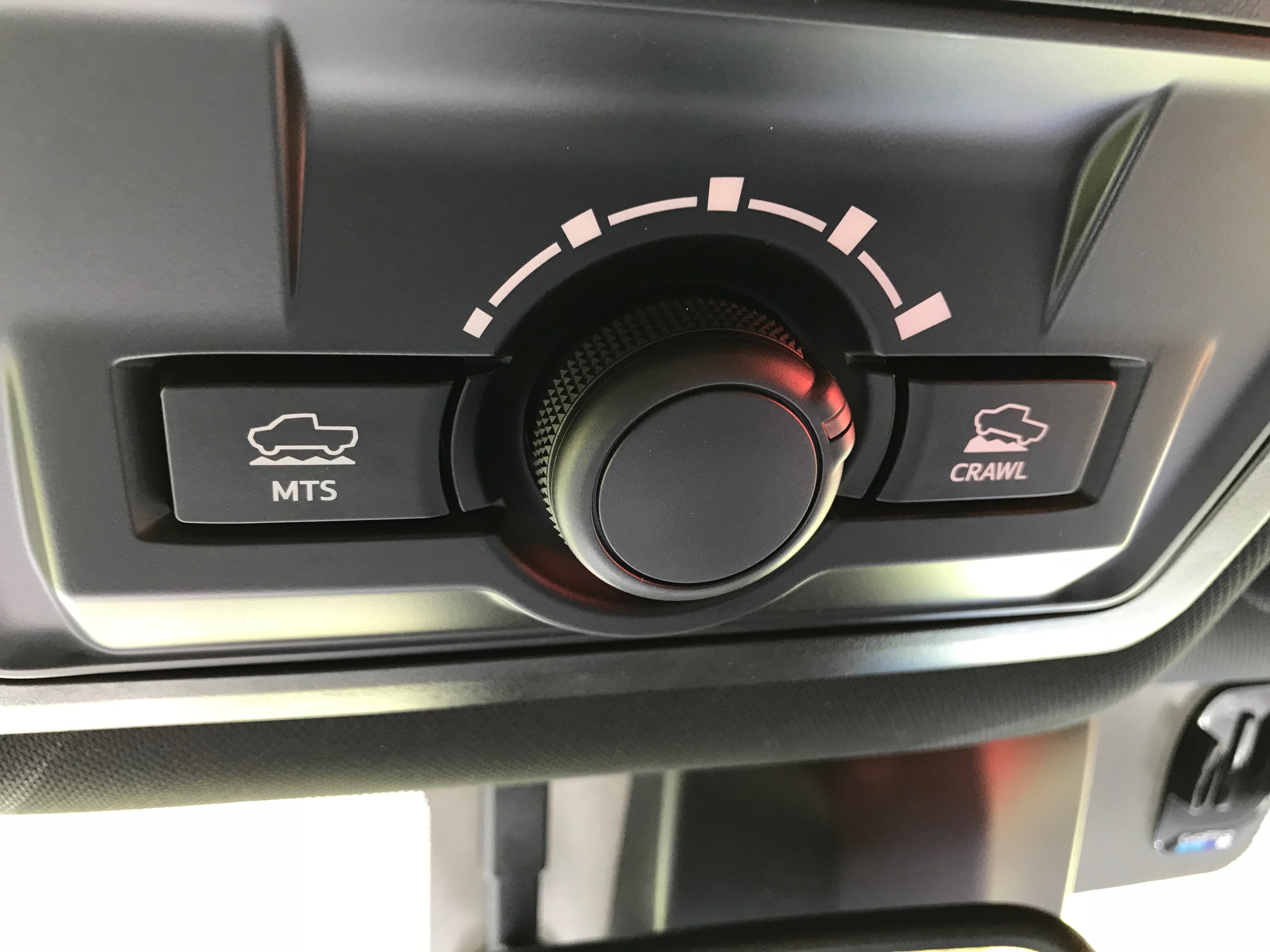
 The Tacoma had the ability to use a sophisticated crawl mode, but because it was using computer control of the ABS to manage crawl rate, it created quite a racket versus the Chevy’s system, which relies on its low gearing to keep you at a snail’s pace. The Chevy also has a simpler engagement, whereas it took a little time to get the Tacoma into the right mode. Once we found it, though, the Toyota had the ability to control the speed with a dial, which made it easier to manage rocky trails without touching the pedals. It would be a bit better if that dial weren’t above your head, right behind the rear-view mirror, but we’re willing to overlook this because of the system’s advanced nature.
The Tacoma had the ability to use a sophisticated crawl mode, but because it was using computer control of the ABS to manage crawl rate, it created quite a racket versus the Chevy’s system, which relies on its low gearing to keep you at a snail’s pace. The Chevy also has a simpler engagement, whereas it took a little time to get the Tacoma into the right mode. Once we found it, though, the Toyota had the ability to control the speed with a dial, which made it easier to manage rocky trails without touching the pedals. It would be a bit better if that dial weren’t above your head, right behind the rear-view mirror, but we’re willing to overlook this because of the system’s advanced nature.
When it comes to factory options, the Tacoma TRD Pro is pretty much monospec, with the version at the event including the $2,000 auto transmission and just a few pieces from the accessory list, which is pretty extensive—you can get cool stuff like a GoPro mount for the bed side. All in it came to $44,650. For this price, the Tacoma also represents a phenomenal value.
What’s the verdict?
In the end the Tacoma isn’t quite as capable as the Colorado for a few different reasons. The Chevy’s diesel engine makes throttle management at a crawl easier, and it also has locking differentials on both the front and the rear (the Toyota only has a rear locker), which could help to get you out of some sticky situations.
The Chevy’s suspension is also a bit better, not only for trail feel, but also on-road body control, so it has an advantage in both settings. And even though there’s a bit more comfort in the Tacoma over undulating terrain, that’s probably not what off-roaders really value most.

Toyota Entune screen
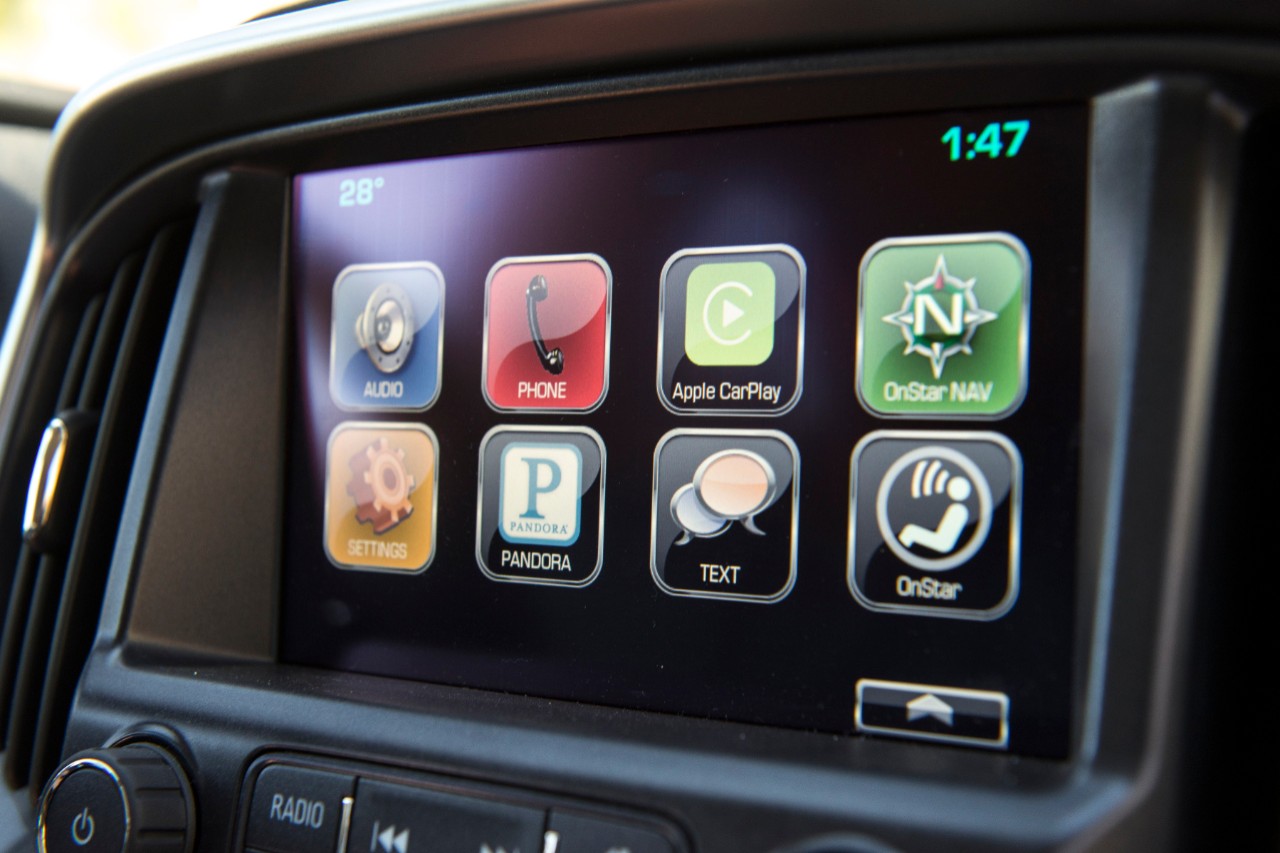
Chevy MyLink screen, photo credit: GM
And while the Toyota does have a Smart Key System with push-button start, its 7” Entune infotainment doesn’t quite stack up to the Chevy’s 8” MyLink screen, especially since Entune doesn’t yet have Apple CarPlay and Android Auto. Toyota has said they’ll have CarPlay on some 2019 models, but not Android Auto.
While the final tab for the ZR2 was about six-grand more dear, at $50,535, over half of the difference was the Midnight Edition equipment, and without the diesel the Chevy starts about $1,500 less than the Toyota. The differences mean that head to head, we’d pick the Colorado ZR2.
